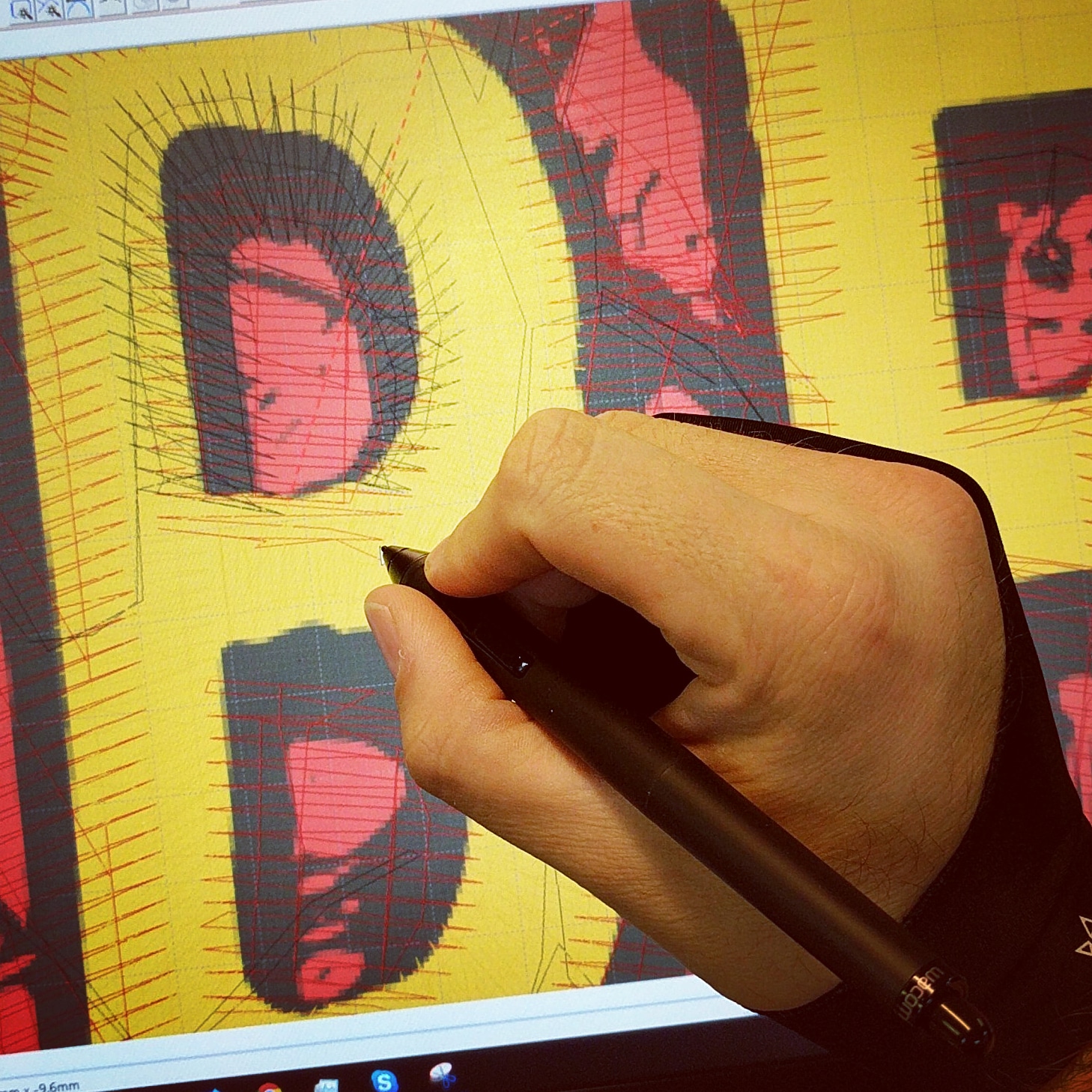Premium Digitizing for Embroidery: Expert Workmanship
Premium Digitizing for Embroidery: Expert Workmanship
Blog Article
Grasping the Needlework Digitizing Process: Your Ultimate Overview
Needlework digitizing is a thorough craft that calls for accuracy and competence to translate elaborate designs into digital formats for equipment needlework. As craftsmens start this journey to understand the needlework digitizing procedure, a thorough understanding of the essentials sets the structure for excellence. Beyond the simple understanding lies a world of advanced software application, specialized tools, and nuanced techniques waiting to be checked out. By diving right into the subtleties of digitizing, one can unlock a globe of creative opportunities and boost their needlework tasks to new heights.

Comprehending Needlework Digitizing Basics
Embroidery digitizing essentials form the foundation whereupon complex designs are converted right into machine-readable layouts for specific sewing. This preliminary action in the needlework digitizing procedure is essential for making sure that the last stitched item is a devoted depiction of the original design. Recognizing needlework digitizing essentials includes grasping key principles such as stitch types, sew direction, density, rug, and pull compensation.
Stitch types play an important duty in identifying the visual and textural result of the stitched style. By choosing the ideal stitch kind, whether it be satin, fill, or running stitch, digitizers can attain the desired effect and boost the overall quality of the embroidery. In addition, sew instructions affects the flow and measurement of the layout, while thickness establishes the spacing and protection of the stitches.
In addition, rug sewing offers security to the layout by protecting the material and avoiding distortion during the embroidery procedure. Pull compensation is another necessary consideration to combat the all-natural tendency of fabric to agreement when sewn. Understanding these needlework digitizing fundamentals is essential for producing professional-quality embroidered products.
Picking the Right Digitizing Software Application
Selecting the proper digitizing software application is an important choice that significantly influences the performance and quality of the embroidery digitizing procedure. Digitizing for Embroidery. When selecting the best digitizing software program, it is necessary to consider variables such as the intricacy of styles you intend to develop, the user-friendliness of the software application, the level of consumer assistance provided, and the compatibility with your embroidery maker
There are numerous digitizing software options readily available on the market, varying from basic programs for beginners to innovative software application for professional digitizers. Some preferred choices consist of Wilcom EmbroideryStudio, Hatch Needlework Software, and PulseID. These software program plans offer a wide variety of tools and functions to aid you develop intricate styles with simplicity.
Prior to making a decision, it is advisable to check out the various software application options via complimentary tests or trials to determine which one best suits your requirements. Additionally, reviewing evaluations and looking for suggestions from knowledgeable digitizers can provide useful understandings right into the toughness and weak points of each software program plan (Digitizing for Embroidery). By very carefully reviewing your demands and contrasting the attributes of various digitizing software, you can check my blog make an educated option that boosts your needlework digitizing workflow
Digitizing Tools and Techniques

Optimizing Style Settings for Needlework
Grasping the details of design setups is essential in accomplishing ideal cause the needlework digitizing process, structure upon the foundation laid by comprehending digitizing tools and strategies. When enhancing style settings for needlework, it is important to think about elements such as stitch kind, density, padding, pull compensation, and enrollment. Stitch type selection influences the total look of the style, with choices like satin, fill, and running stitches providing different textures and effects. Density refers to the spacing and density of stitches, impacting the layout's insurance coverage and durability. Proper rug stitching supplies stability and stops textile distortion, specifically for complex designs or on stretchy materials. Pull settlement changes for textile stretch throughout sewing, making certain accurate style duplication. Registration setups straighten different components of the style properly, preserving overall layout integrity. By fine-tuning these style settings, embroiderers can boost the quality and precision of their embroidered developments.

Troubleshooting Common Digitizing Issues
When coming across usual digitizing concerns during the needlework process, it is vital to understand the root triggers and apply efficient solutions without delay. One typical issue is stitch density concerns, where stitches may be too thick, creating the material to tighten, or also sporadic, bring about spaces in the layout. Adjusting the stitch density setups in the digitizing software application can aid solve this issue.
One more constant obstacle is string breaks throughout the embroidery process. This can sites take place due to various factors such as incorrect tension settings, dull needles, or using low-grade string. Ensuring appropriate upkeep of the needlework equipment, including routine needle changes and stress adjustments, can decrease the incident of thread breaks.
In addition, style registration mistakes can cause misaligned components within the embroidery style. Inspecting the style positioning in the digitizing software program and making required adjustments prior to sewing can help in preventing this concern. By attending to these usual digitizing issues immediately and efficiently, you can make certain a smoother embroidery procedure and high-grade ended up products.
Final Thought
To conclude, mastering the embroidery digitizing process requires a Read Full Report solid understanding of the essentials, the appropriate selection of software program, and knowledge of tools and methods. Optimizing layout setups and troubleshooting usual digitizing issues are crucial actions in making certain top quality needlework results. By following these steps diligently, one can attain accuracy and effectiveness in the digitizing process.
Report this page